-
Posts
1,122 -
Joined
-
Last visited
Content Type
Profiles
Forums
Events
Store
Posts posted by Tony Krome
-
-
6 hours ago, Steve Thomas said:
Mr. BELIN - What else did you see?
Mr. BENAVIDES - Then I seen the man turn and walk back to the sidewalk and go on the sidewalk and he walked maybe 5 foot and then kind of stalled. He didn't exactly stop. And he threw one shell and must have took five or six more steps and threw the other shell up, and then he kind of stepped up to a pretty good trot going around the corner.The gunman was very close to the Tippit car (around 5ft) when he carried out the unloading procedure as seen in the photo below. I assume that all chambered rounds, both used and unused dropped into the gunman's palm. He then picks out one used shell and throws it, takes 5 or 6 more steps, picks out another used shell and throws it.
Just before the gunman disappeared around the corner of Tenth/Patton, he then reloaded the unused rounds;
Mr. BELIN - Do you remember if he was trying to put anything in the gun also?
Mr. BENAVIDES - Yes. As he turned the corner he was putting another shell in his gun.Benavides tells us that the weapon the gunman had, dispensed 2 used shells, even though he heard 3 shots.
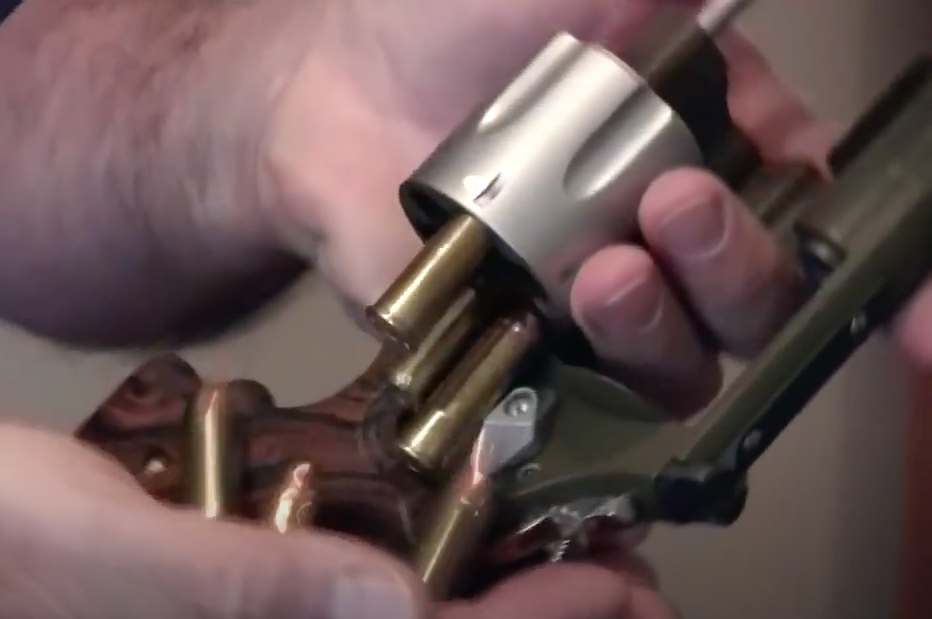
-
Note in the affidavit below how a shell is "found" after the police had already left. Something tells me they got the count wrong. We know that different brand bullets were used to shoot Tippit which may indicate more than one shooter. Did they at first think that Tippit was hit with three bullets? Remember that one bullet hit a button which only left a superficial wound. It may well be the case that another shell had to be later found.
Keep in mind that it was a crime scene and one of their own was killed. The police were told that the gunman emptied his revolver as he crossed the yard. But a 16 year old can later find a shiny shell where trained police officers can not?
On the document below, I've added the matching telephone number found in Crafard's notebook that he used for compiling calls for Jack Ruby.

-
Since the reenactment sign appears lower in the gif below, does that confirm Shaneyfelt was taller? Its strange that they varied the vehicle ride height and the cameraman height for the reenactment.

-
4 hours ago, Chris Davidson said:
Just to be clear, are you are talking about the vertical height of the Stemmons top horizontal plane? In other words, there is a height difference of 10" at the site of the Stemmons sign between the Z-film and the reenactment film?
-
Retracing Brewer's and Postal's suspect, we arrive at the Tippit shooting scene.
This scene has several links to Jack Ruby's temp employee, Crafard;
1, A telephone number found in Crafard's notebook is the same number of the Tippit witness Davis residence on the corner of Tenth/Patton (CD 717)
2. Crafard frequented the same Eat Well Cafe where Tippit witness Helen Markham worked (CE 2250)

-
So far I have shown that Curry, on Saturday, had the Oswald/negro/car information from Fritz via Roger Craig. Curry knew nothing about a bus.
The Texas Theatre;
A straight line from the street, there is Julia Postal's Box Office, the doors to the lobby, and the doors to the theatre concession area where Butch Burroughs worked.
Mr. BALL. The last time you had seen him before he ducked in, he was just standing outside of the door, was he?
Mrs. POSTAL. No, sir; he was still just in----just off of the sidewalk, and he headed for the theatre.
Mr. BALL. Were the doors of the theatre open?
Mrs. POSTAL. No, sir.
Mr. BALL. It was closed?
Mrs. POSTAL. It was closed.
Mr. BALL. And you didn't see him actually enter the theatre then?
Mrs. POSTAL. No, sir.The lobby doors, just behind the Box Office, would have been open, but the theatre doors, that Julia mentioned, were closed. They would have been closed because the movie "War is Hell" commenced from 1:20pm.
Mr. BALL. Did you see that man come in the theatre?
Mr. BURROUGHS. No, sir; I didn't.Burroughs would have been there alone stocking confectionary while patrons were watching the movie adjacent to his location. He later assumed that if the man that Julia Postal saw came into the building, he went up the balcony stairs that were between the lobby doors and the closed theatre doors.
That aside, we have Oswald sitting in the lower level of the theatre. If Oswald arrived earlier, it all makes sense.
Mr. BALL. Now, did many people go into the theatre from the time you opened at the box office until about 1:15 or so?
Mrs. POSTAL. Some.
Mr. BALL. How many? Can you give me an estimate?
Mrs. POSTAL. I believe 24.Dealey Plaza 12:40pm;
Roger Craig witnesses the Oswald/negro/car and reports it later that day;
Mr. CRAIG - ..... Captain Fritz then asked him ........ "What about this station wagon?" ........ Captain Fritz then told him, as close as I can remember, that, "All we're trying to do is find out what happened, and this man saw you leave from the scene." And the suspect again interrupted Captain Fritz and said, "I told you people I did."
Note: Craig does not report that Fritz mentioned a bus. This would be after the first round of interrogation that Hosty attended. If a bus was bought up in the interrogation Fritz would have questioned Oswald while Craig was there as to why his story had changed.
If you want to believe Bledsoe, and if you want to believe nobody bothered to tell Curry about a bus, that's fine. But it sure looks like Oswald was picked up by a dark complected person in a car and was driven directly to the Texas Theatre to arrive before the theatre doors were closed.
The "suspect" in the charade that Brewer and Postal refer to, more than likely came from the Tippit shooting. This guy's objective was to draw attention and to steer attention to the Texas Theatre where Oswald was already seated so that the arrest could be effected.
-
49 minutes ago, Richard Price said:
"ghost train"
Not only that, but there were reports of a "Circus train" as well.
VIRGIE RACHLEY: I guess it would be by the underpass, the triple underpass, and there is a railroad track that runs back out there and there was a train that looked like a circus train as well as I can remember now, back there, and we all ran to the plaza-the little thing there I guess you call it a plaza
Every time I read this, I picture caged lions and elephants behind the TSBD.
-
6 hours ago, Steve Thomas said:
Tony,
What "little boy" came in that room, and then went back to work?
The only person in this case screwier than Helen Markham is Mary Bledsoe.
http://mcadams.posc.mu.edu/russ/testimony/bledsoe.htm
The testimony of Mary E. Bledsoe was taken at 9:30 a.m., on April 2, 1964,
Mr. BALL - But, before you go into that, I notice you have been reading from some notes before you.
Mrs. BLEDSOE - Well, because I forget what I have to say.
Mr. BALL - When did you make those notes?
Mrs. BLEDSOE - What day did I make them?
Miss DOUTHIT - When Mr. Sorrels and I were talking about her going to Washington, he made the suggestion that she put all the things down on paper because she might forget something, and I said, "Mary, you put everything on a piece of paper so that you can remember it and you won't forget anything, you know, what happened," and that's when she started making notes.
Mr. BALL - You have made the notes in the last week?
Mrs. BLEDSOE - Yes.
Miss DOUTHIT - At my suggestion and Mr. Sorrels.
Mr. BALL - You didn't make any notes during the week he was there?
Mrs. BLEDSOE - No; I didn't pay any attention to him.Mr. BALL - Now, when did you see Oswald again?
Mrs. BLEDSOE - Well, I went down to the parade. Oh, when was the parade? The 22d of---the next---22d of February---when was the parade?
Mr. BALL - The 22d of November the President came to Dallas.She talks about Oswald getting on the bus, and then getting off.
Mr. BALL - Was there traffic? Was the traffic heavy?
Mrs. BLEDSOE - Oh, it was awful in the city, and then they had roped off that around where the President was killed, shot, and we were the first car that come around there, and then all of us were talking about the man, and we were looking up to see where he was shot and looking---and then they had one man and taking him already got him in jail, and we got----"Well, I am glad they found him."If the passengers on Bledsoe's bus were talking about the police having picked somebody up for shooting JFK, she couldn't have seen Oswald. He was long gone at that point.
Mr. BALL - Uh-huh. Now, did you ever see Oswald in a lineup?
Mrs. BLEDSOE - No.
Mr. BALL - Never did see Oswald after he was arrested?
Mrs. BLEDSOE - Not after he got off the bus; no.
Mr. BALL - But, you looked at the pictures of Oswald?
Mrs. BLEDSOE - Yes.
Mr. BALL - Showed you the pictures of Oswald?
Mrs. BLEDSOE - The man down at the police station, he had a picture of him with a gun, and said, "Do you recognize him?"
And I said, "Yes; it is Oswald." That is the one that I remember him.
Mr. BALL - Do you know the name of the man who showed you the picture of the man with the gun?Mr. BALL - Now, I have got a piece of clothing here, which is marked---
Mrs. BLEDSOE - That is it.
Mr. BALL - Commission Exhibit 150.
Mrs. BLEDSOE - That is it.
Mr. BALL - This is a shirt.
Mrs. BLEDSOE - That is it.
Mr. BALL - What do you mean by "that is it?"
Mrs. BLEDSOE - Because they brought it out to the house and showed it.Mr. BALL - Had you ever seen him wear this shirt before, when he was around your house?
Mrs. BLEDSOE - No.
Mr. BALL - First time you ever saw the shirt was when you saw him on the bus?
Mrs. BLEDSOE - Uh-huh.When she went down to the police station to give a statement, they showed her a picture of Oswald with a gun, which didn't come into evidence until Saturday the 23rd. She only recognized CE 150, because it was the shirt the police, at some point, brought out to her house.
Steve Thomas
Steve, actually, Bledsoe's testimony is quite enlightening. If you wish to believe Curry was NOT out of the loop, and he was up to date with developments, there was no Bledsoe phone call to police Friday night, and there was no mention of a bus during the Fritz/Oswald interrogations.
Curry, on Saturday, mentioned that he had heard Oswald was picked up by a negro in a car. We know Roger Craig passed information to that effect to Fritz on Friday afternoon. What this tells us, is that there was communication between Fritz and Curry. Curry and Fritz had their heads together discussing how Oswald got across town. Note that Fritz tells Curry about the negro/car but not the bus.
What fits the "Lone Nut" picture better, the bus/cab story or the negro chauffeur?
Re: "little boy", Bledsoe mentions "we" and "next door", so it may be the case that she was at the neighbors where this little boy was.
Re: Sorrels and Bledsoe. I believe it was Sorrels that intimidated Jean Hill and told her there were 3 shots ONLY. Now we have Sorrels closely advising Bledsoe.
Re: heavy traffic, Milton Jones said that the bus was held up for an hour, that police were searching the bus looking for weapons. Does Bledsoe have that in her notes?
Re: line up, Notice that none of the landlords at Marsalis and Beckley attended a line up?
Re: CE150, so a key piece of evidence (Oswald's shirt) was taken out to Bledsoe's house? haha ok
-
Mr. BALL - When did you first notify the police that you believe you'd seen Oswald?
Mrs. BLEDSOE - When I got home, first thing I did I went next door and told them the President had been shot, and he said, "Why, he has got killed." Well, I turned on the radio--television--and we heard ambulances and going around and there was a little boy came in that room in the back and he turned it on, and we listened and hear about the President, only one I was interested in, so, he went on back to work and they kept talking about this boy Oswald and had on a brown shirt, and all of a sudden, well, I declare, I believe that this was this boy, and his name was Oswald---that is---give me his right name, you know, and so, about an hour my son came home, and I told him and he immediately called the police and told them, because we wanted to do all we could, and so, I went down the next night. He took me down, and I made a statement to themSo Porter Bledsoe, Mary Bledsoe's son, called the police Friday evening and relayed information such as his mother seeing Oswald on the bus, and probably mentioned that Oswald had been boarding at their house recently.
Police Chief Curry, the next day, Saturday;
Reporter: How did he get across town? Did he get over by a bus? Car?
Curry: I don't know, we have heard that he was picked up by a negro in a car.
24 hours later on Saturday night, according to Bledsoe, Porter drives her to the police station. Her affidavit is dated the Saturday the 23rd which appears to confirm this.
Curry had 2 avenues to receive information about Oswald boarding a bus, the Bledsoe Friday phone call and the Fritz Oswald interrogations.
Are we to believe the police mouthpiece for the worldwide media, which was the Police Chief himself, was out of the loop? Are we to believe that Police would wait 24 hours before interviewing Bledsoe? Could the bus scenario have been developed after Curry spoke to the media?

-
Train and no train comparison;
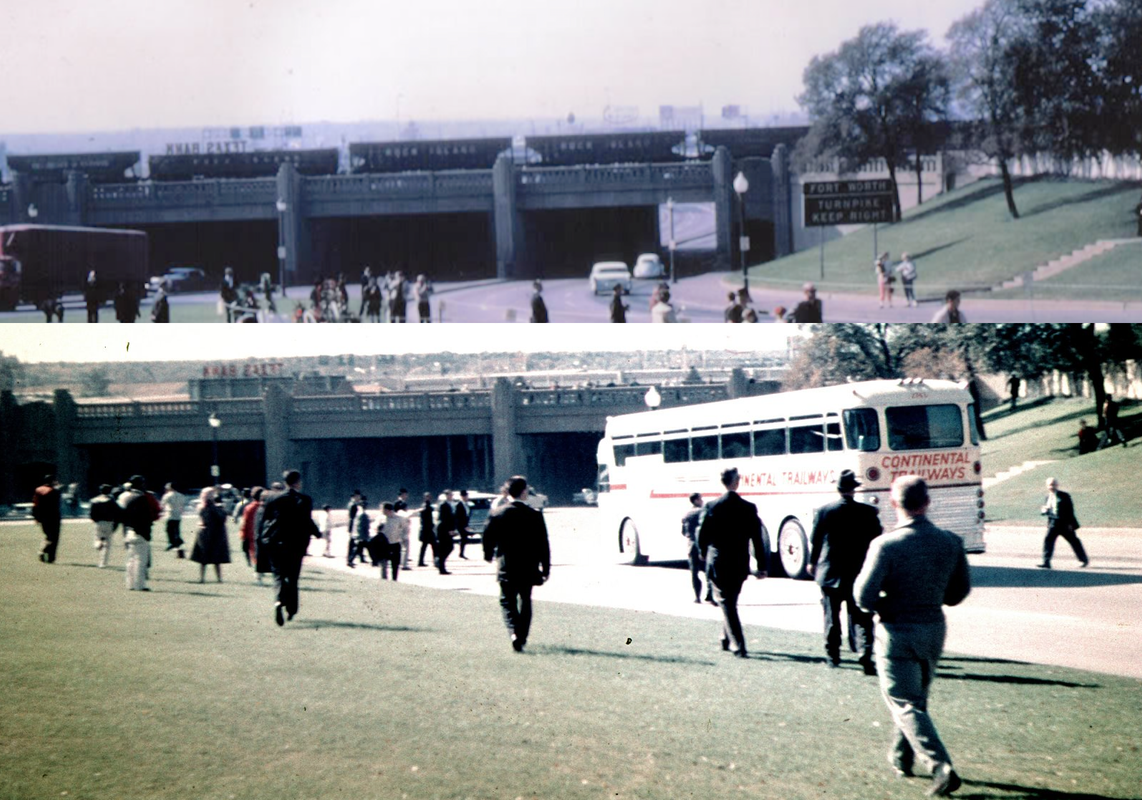
-
The "Snipers Nest" as seen from the Triple Underpass construction site
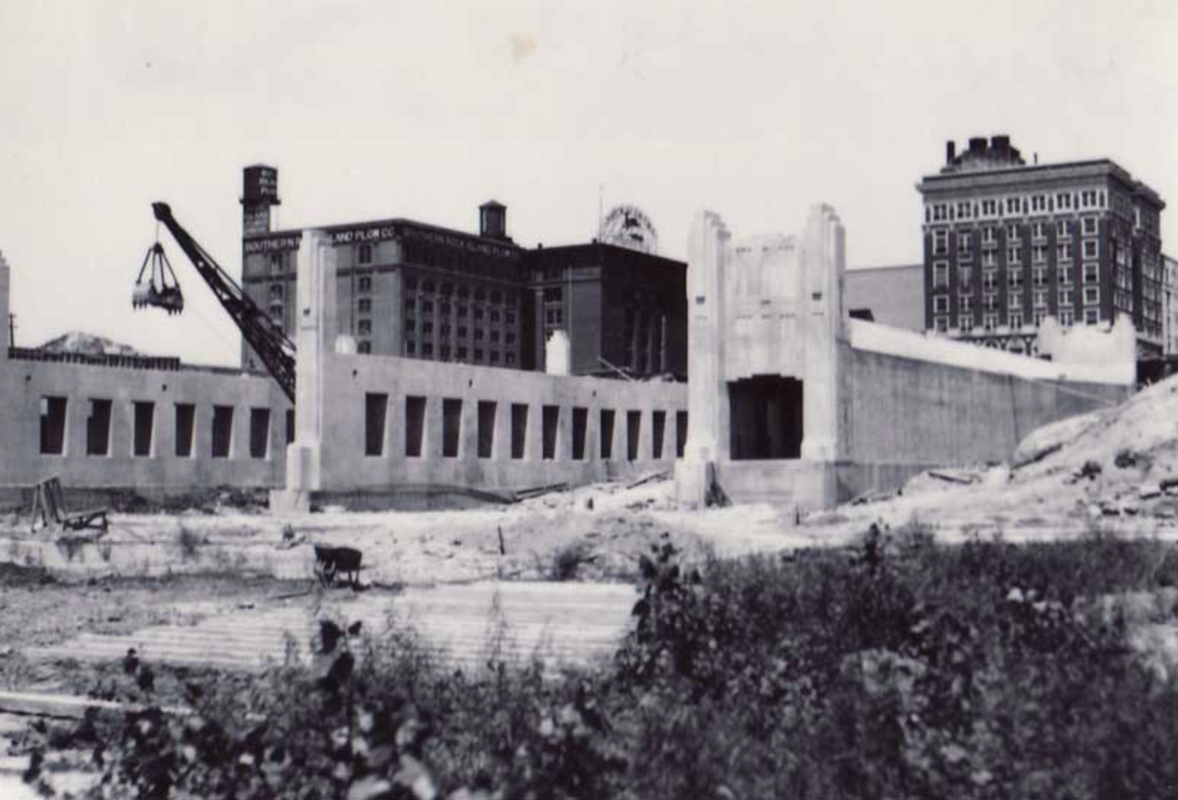
-
Site of the old Dallas Herald building cleared circa 1935
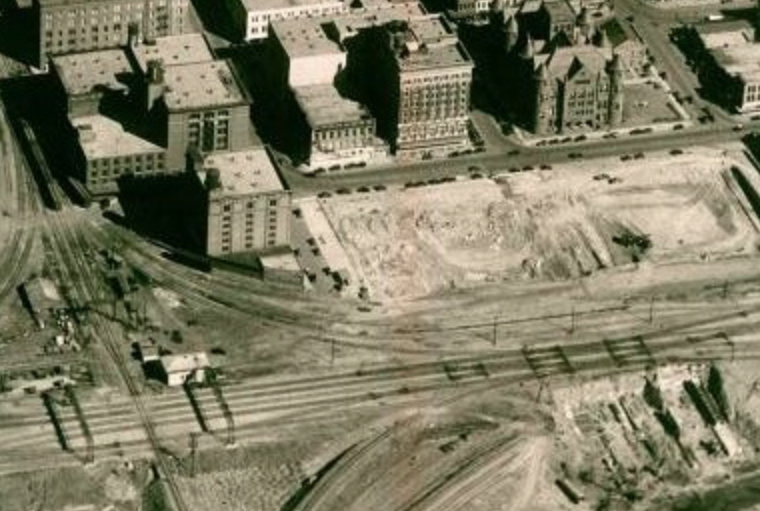
-
Below shows the old Dallas Herald building (no longer occupied by the Herald) across the road from the Southern Rock Island Plow Co building (later TSBD) The Dal-tex building was then the John Deere Plow Co, circa 1926

-
Croft, Betzner and Willis etc would have been standing on the site of the Dallas Herald building.

-
18 minutes ago, Joseph McBride said:
A problem with the sketch is the insert of a guy who wasn't shooting doing the shooting.
That gunman insert is an old mock-up that I put together to give me an idea what Brennan etc should have seen. Using the box as an armrest, the rifle holder's face should have been visible.
-
Old 1870s sketch showing the original Dallas Herald building location across from the future site of the TSBD

History
The Dallas Daily Herald and the Dallas Weekly Herald originated from Dallas Herald, the town's first local newspaper. Founded by James Wellington Latimer and William Willis in 1849, the Herald circulated as a weekly until 1873. As railroads arrived in Dallas in the early 1870s and the population boomed, the Herald's then owner, John W. Swindells, recognized an opportunity for expansion. In 1873, Swindells began publishing the Daily Herald and renamed the weekly edition the Dallas Weekly Herald.
-
2 hours ago, Gene Kelly said:
Jennifer Juniors, Inc., produced the Chalet and Jennifer Juniors brands of dresses. From the summer of 1953 to April 1954, Zapruder worked at Nardis side-by-side with Jeanne LeGon (formerly Eugenia Fomenko). Jeanne designed the clothing and Abraham Zapruder cut the patterns and the material for her.
I guess the only way to confirm the information I've provided below is to find the documents that show when Jennifer Juniors was established. 1949 and 1952 presents a problem with Zapruder and Jeanne working together.
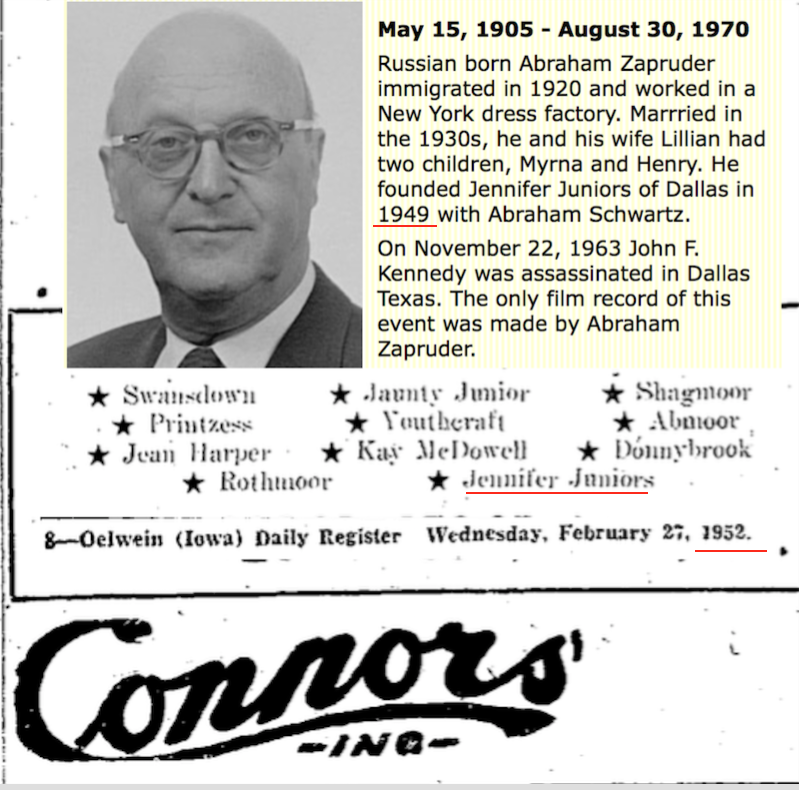
-
I have both Jeanne LeGon and Zapruder as working for Benny Gold/Nardis, but I can't place them there in the same time period. If anyone has anything definitive, please let me know.
-
45 minutes ago, Chris Barnard said:
I like your logic, Tony. So do you think a lower calibre bullet was needed to pass through the windshield without making too much of a mess of the glass?
Initially, they were setting Oswald up with 7.65 rounds, so that has to taken into account. A smaller hole than the planted shells would be hard to explain.
-
2 hours ago, Chris Barnard said:
Very good point, Tony. I am still on the fence about the ‘throat shot’ as to whether it was a ‘kill shot’ or something to debilitate JFK. Mainly because I think the deviation through a windscreen could be predicted in a reasonably accurate way. The shot would have been 100m perhaps from the south knoll fence, maybe slightly more.
i have raised the issue before as to whether a higher calibre bullet would have shattered or caused more of a spider web effect on the presidential limo windscreen. ie would a lower calibre bullet have passed through in a less noticeable way? JFK having a fatal shot at that point may have made it easier to blame it on Oswald, he is closer, easier shot but, there is also a higher population density closer to the SBD than further down when JFK suffers the fatal wound(s).
Yes, the deviation through the windshield would have been a careful consideration. The only thing I have, and I've mentioned it before, is that both the Kennedys looked momentarily at the middle of their seat, then JFK raised his head (behind the sign) as the shot was fired (re Jean Hill's testimony). Therefore an intended forehead shot became a throat shot.
Another point I'd like to make, is that the idea was to assassinate the President, not wound him. A possible scenario could have presented itself whereby Jackie pulled her husband down to protect him after the first shot, just like Nellie did with Connally. In that case, any further shots to JFK would have been an impossibility. An opportunity lost.
-
Interesting to note:
If the first bullet, the one that caused JFK to raise his arms, had of caused JFK's head to "open up", that moment would have been obstructed by the Stemmons Sign. Further, no existing moving film, that is known, would have captured that moment. There would have been no further point in additional shots as the "head opening up" would have been obvious to the telescoped eye or spotter. Remarkably, the sign that Zapruder "neglected" to take into account when he told "them" that he was going to get the whole view, could have masked the fatal head shot that killed JFK.
-
We see Sitzman has been suggested as part of "them". Sitzman was on the pedestal and could see the back of the Stemmons Sign blocking part of Elm.
The location for attaining the "whole view" was supposedly chosen after three attempts;
A: 12:15 p.m. I was looking for a place where to stand so I would be able to take pictures of the arrival of the President.
Q: Was anybody with you at this time?
A: Yes, one of my secretaries.
Q: Did you find such a location?
A: After three attempts, yes.So this would be after Zapruder, it has been suggested, told Sitzman he was going to get the whole view. You would think that Sitzman would tap him on the shoulder and point out that the sign obstacle is contrary to what she had just been told, keeping in mind that his previous attempts to find a location was an effort to find a unobstructed view.
It was not like Zapruder was running out of time to find an ultimate location. He practised by filming the Hesters and Sitzman from the pedestal before the motorcade arrived. We see them casually interacting.
-
1 hour ago, John Butler said:
Tony,
Sorry, I gave it a try, but could not find any relevant information about CD 897 on the internet. Just one page in a pdf of someone other than Foster.
Maybe a reference to something other?
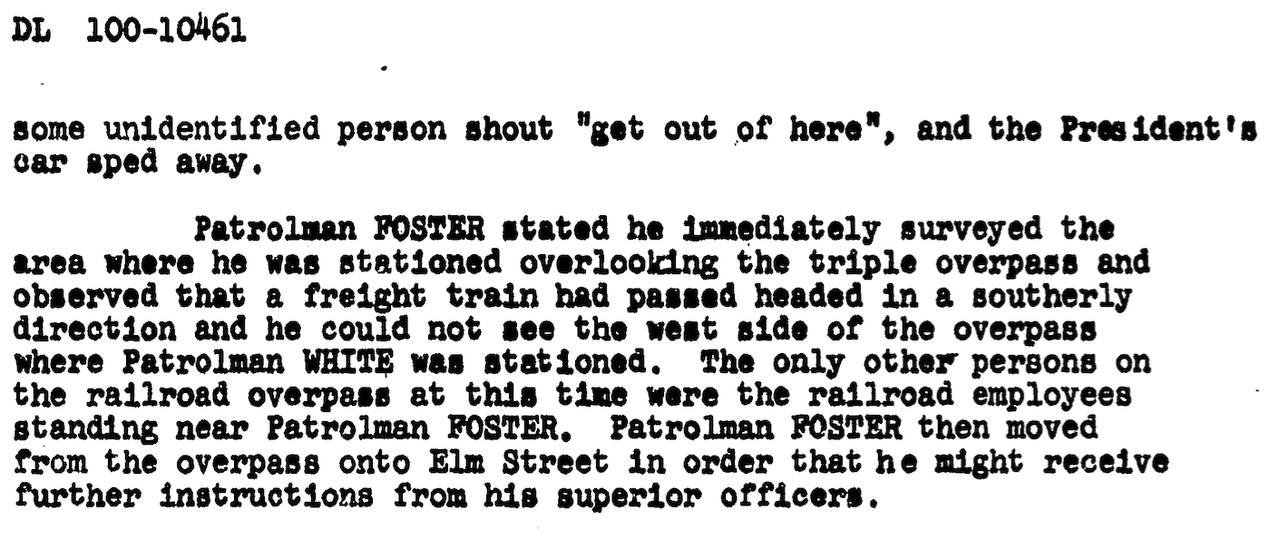
-
1 hour ago, Chris Scally said:
For Tony Krome: Tony, any idea where that quote from Lillian Zapruder about Mr. Z's phone call from Kodak at 8pm on the night of the assassination comes from, please? I haven't come across that one before. Any information would be much appreciated, thanks.
During the Reagan years, around the time he was shot, an historical society in Dallas interviewed Lillian. She also said that they kept the original of the Zapruder film. She said that based on the fact that their copy retained the private family footage at the beginning of the roll. So this was many years later that she was interviewed, and she has the idea that their copy was original, so I would assume her husband had indicated it was, or it was never discussed between them and she assumed wrong.



Bledsoe and 24 hours
in JFK Assassination Debate
Posted
So we question the actions of the gunman, who could plainly see that the car, driven by Benavides, had pulled up adjacent to his position. The gunman knew he was being witnessed. What does he do? He makes an obvious show of dispensing two empty shells. He wasn't wearing gloves that I'm aware of, so he knew the shells he touched, as he threw them, had his prints on them. At the very least, one of the shells, which Benavides said he picked up, then dropped, would have had prints on it.
Benavides said both shells, that he ended up placing in an empty cigarette box, were "chrome";
Mr. BENAVIDES - Yes. Well, right after that I went back and I knew exactly where they was at, and I went over and picked up one in my hand, not thinking and I dropped it, that maybe they want fingerprints off it, so I took out an empty pack of cigarettes I had and picked them up with a little stick and put them in this cigarette package; a chrome looking shell.
Mr. BELIN - A chrome looking shell?
Mr. BENAVIDES - Yes, sir.